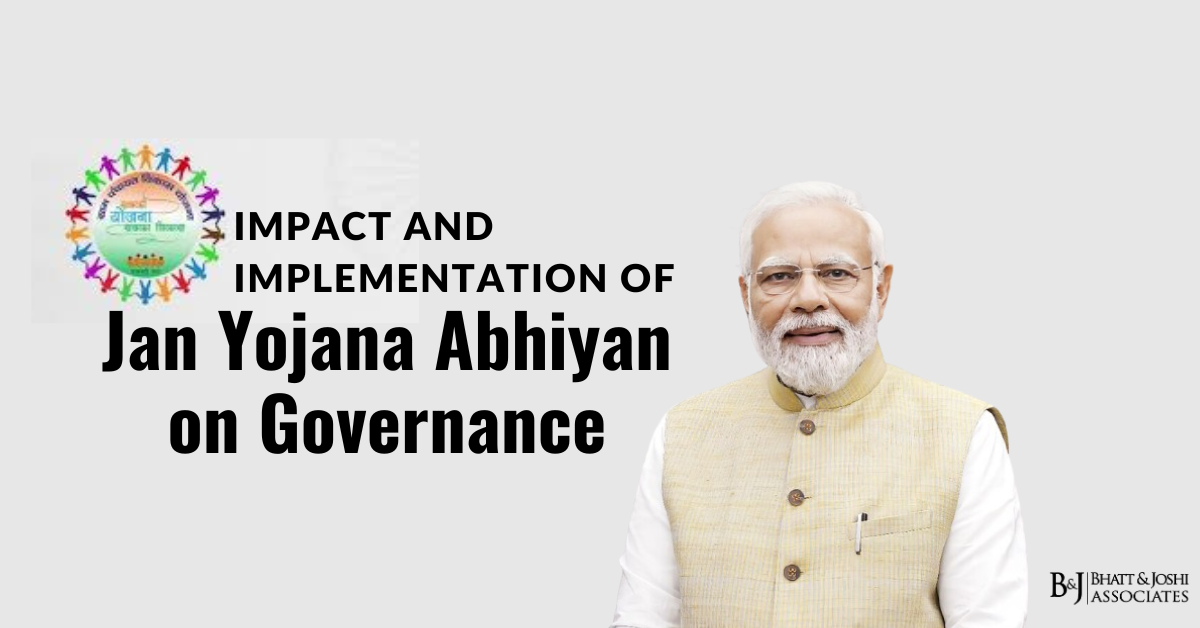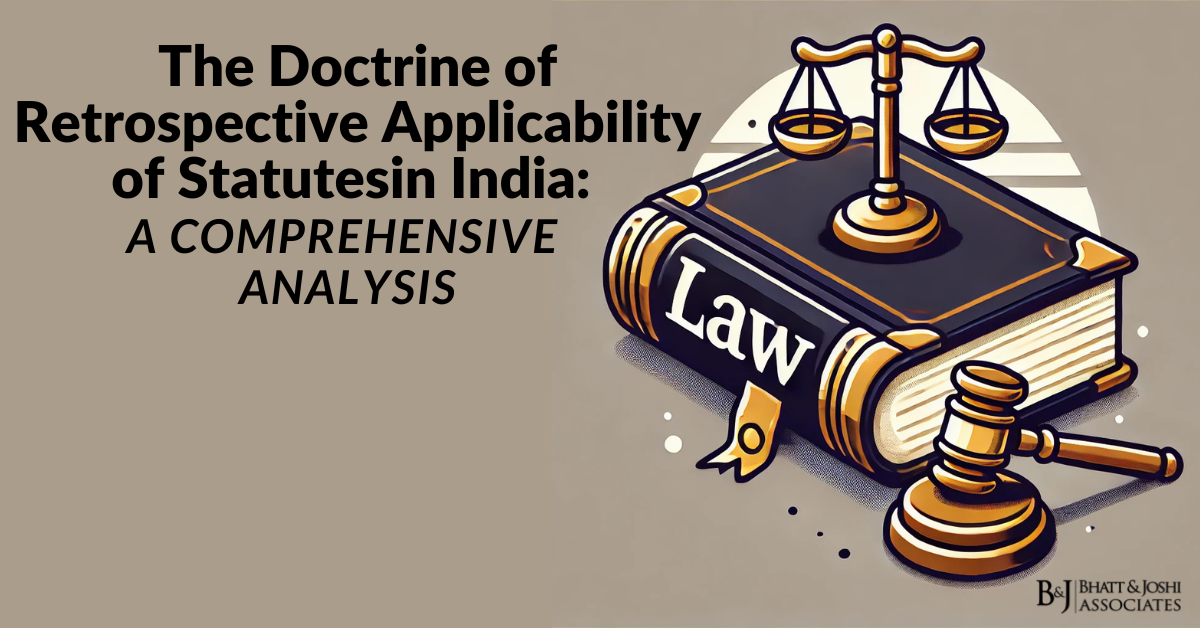Introduction
The “Jan Yojana Abhiyan” represents a massive initiative in India aimed at improving governance through direct engagement with the residents. This initiative reflects the principle of participatory governance and aims to ensure that government schemes and policies work close to the needs and aspirations of the people. This initiative reflects India’s commitment to achieve inclusive development and to ensure that governance reaches most people in the country. The Abhiswan has been successful in bridging the gap between the government and its people and has fostered a sense of shared responsibility and ownership amongst the residents. This article investigates the multifaceted impact of the Jan Yojana Abhiyan on governance to examine the implementation, regulatory frameworks, legal implications, and notable case laws which have shaped its trajectory. By looking into these areas of the text the article aims to give the reader a comprehensive understanding of the changes that have been made to the governance structure of India due to this initiative.
The Genesis of Jan Yojana Abhiyan
The Jan Yojana Abhiyan is the result of India’s drive to achieve better inclusivity, transparency, and accountability in governance. During its formulation, there was an understanding that governance from the top usually does not cater to the more subtle and localized requirements of different people. The initiative aims at the inclusiveness of citizens, where individuals take an active part in governance instead of being passive beneficiaries of the rudimentary services in education, health, infrastructure, and finances provided by the state.
The Initiative also seeks to achieve the core objectives of the Article 21 of the Indian Constitution which speaks of the right of every citizen to life and liberty which includes the right to live with a decent standard. Besides, the initiative is guided by welfare principles of fundamental rights which focus more on the welfare of the people and the need to remove discrimination within the society. Jan Yojana Abhiyan is an initiative intended to meet the constitutional requirements through an equivalently responsive system of governance which is fully attended to, inclusive, and participatory.
Key Objectives of the Jan Yojana Abhiyan
The Jan Yojana Abhiyan is driven by a set of clearly defined objectives that underscore its transformative potential. The initiative seeks to facilitate the effective implementation of government schemes by ensuring that they are tailored to the people’s needs. It also aims to promote citizen-centric governance by creating avenues for direct engagement and feedback. Enhancing transparency and accountability in public administration is another critical objective, as is bridging the gaps between policy design and ground-level execution.
These objectives are pursued through a combination of innovative strategies, including the use of technology to streamline administrative processes, the establishment of grievance redressal mechanisms, and the promotion of social audits. By prioritizing these objectives, the Jan Yojana Abhiyan seeks to create a governance framework that is both efficient and equitable.
Legal Framework Governing the Jan Yojana Abhiyan
Several legislative and constitutional features help execute the Jan Yojana Abhiyan Program and give it strong legal backing. The Right to Information Act of 2005 (RTI Act) promotes transparency by allowing the public to question how the initiative is functioning and request information about its dealings, thus requiring the concerned authorities to perform their duties. Furthermore, the provisions are governed by the Directive Principles of State Policy (Articles 36-51), which establishes the state’s duty to foster the social and economic well-being of people.
Other major enactments are the National Rural Employment Guarantee Act (MGNREGA) of 2005, which provides wage employment to guarantee livelihood security, and the Digital India Initiative which provides a system of governance through information technology. Another important instrument is the Public Financial Management System (PFMS), which allows for tracking the disbursement of funds and thus enables financial control. All these laws interactively constrain the Jan Yojana Abhiyan’s execution to a legal framework which makes it harder for the program to be ineffective or corrupt.
Implementation Mechanisms
With direct public participation in endeavour and implementation, Jan Yojana Abhiyan follows a decentralized system approach to enable the diagnosis of local problems and finding their appropriate solutions. The principle that governance is most effective when it is local also explains the participatory character of this program. At the village’s grass-root level, committees and relevant district administration personnel constitute the vital link who make sure that the schemes are properly implemented for the benefit of the targeted clientele and act as the agents of government to the people and vice versa.
In this program, technology accounts for ten different implementations. Platforms for identification of the beneficiaries and paying cash are Aadhaar-linked to restrict their identification and permit fund payment to them. Also, project monitoring and evaluation can be conducted using real-time systems such as GIS and mobile apps. These tools help ensure that effective projects progress while non-performing projects are stopped and modifications made to exceed expectations.
The participatory character of Jan Yojana Abhiyan is deepened by the social audits and feedback as well as community monitoring of the January scheme. These stimulate the proactive culture of the citizens to raise issues or recommendations that can enhance or improve policies or programs by placing greater accountability on the government. This proves the government’s endeavour to provide efficient and effective governance by undertaking proper targeting.
Impact Jan Yojana Abhiyan on Governance
Enhancing Transparency
One of the most significant contributions of the Jan Yojana Abhiyan to governance has been the enhancement of transparency. By mandating public disclosure of scheme details and financial allocations, the initiative has empowered citizens to hold authorities accountable. The RTI Act has further bolstered this transparency, enabling individuals to seek information and address grievances effectively. This transparency has not only improved trust in governance but has also deterred instances of corruption and malpractice.
Promoting Inclusivity
The Jan Yojana Abhiyan has played a crucial role in the transformation towards inclusiveness. The initiative has tackled socio-economic gaps by focusing on the underprivileged and vulnerable segments of society, which has resulted in balanced development. Initiatives such as the Pradhan Mantri Jan Dhan Yojana (PMJDY) and Ayushman Bharat have brought financial and health services to the doorstep of millions which reflects the initiative’s social justice objective. These programs have further helped strengthen women and other marginalized groups to engage more freely in productive and social life.
Strengthening Decentralization
Decentralization is critical for good governance and the Jan Yojana Abhiyan has certainly aided this aspect. This initiative has allowed policy implementation to be more sensitive and tailored to the specific context by enhancing local governance institutions. This is following the 73rd and 74th amendments of the constitution which seek to devolve authority to Panchayati Raj institutions and to urban local government councils. Providing more focus on peripheral governance has not only improved effective service delivery, but it has also increased the level of responsibility of the local governmental structures.
Regulatory Oversight and Challenges
Regulatory Oversight
The effective functioning of the Jan Yojana Abhiyan is contingent on robust regulatory oversight. Institutions like the Comptroller and Auditor General (CAG) of India and the Central Vigilance Commission (CVC) play a pivotal role in monitoring financial and operational integrity. Additionally, state-level vigilance bodies ensure that the initiative’s objectives are met without compromising on ethical standards. These oversight mechanisms are complemented by the use of technology, which facilitates real-time monitoring and data analysis, thereby enhancing the initiative’s accountability.
Challenges
Despite its transformative potential, the Jan Yojana Abhiyan faces several challenges. Bureaucratic hurdles and delays in administrative processes often hinder the timely implementation of schemes. The digital divide poses a significant barrier, particularly in rural and remote areas where access to technology is limited. Corruption and leakages in fund disbursement remain persistent issues, undermining the initiative’s efficacy. Additionally, inadequate coordination between various governmental agencies can lead to policy implementation gaps, resulting in suboptimal outcomes.
Landmark Judgments and Case Laws
Several landmark judgments have impacted the legal framework of Jan Yojana Abhiyan:
Swaraj Abhiyan v. Union of India (2016)
The 2016 case focused on MGNREGA’s drought relief measures and the ineffective implementation of relief schemes. The judgment emphasized the need for accountability and governance transparency, which also incorporated aspects of the Jan Yojana Abhiyan. The ruling also stressed that the state has a responsibility to ensure that welfare schemes are administered to the entitled beneficiaries most effectively and efficiently as possible.
People’s Union for Civil Liberties (PULC) v. Union of India (2001)
This highlighted the right to nutrition as a crucial aspect of Article 21 of the Constitution. From this verdict stemmed the reforms of the Public Distribution System (PDS) which is closely related to the overarching concern of Jan Yojana Abhiyan which seeks to dismantle poverty and food insecurity. The judgment further noted the need for accountability to essential services in implementation, constituting the core objectives of the initiative.
Olga Tellis v. Bombay Municipal Corporation (1985)
This case acknowledged the right to livelihood as an integral dimension of the right to life. The ruling has preceded numerous employment and welfare schemes in the Jan Yojana Abhiyan, consolidating the state’s responsibility to safeguard the socio-economic rights of citizens. It shows how deeply we are failing to ensure human dignity and social justice in governance.
Conclusion
The Jan Yojana Abhiyan represents a paradigm shift in governance, emphasizing the focus on citizen-centric and participatory approaches to the actual policy implementation. By promoting transparency, inclusivity and decentralization the initiative has fundamentally changed the roles of government and citizens about each other. Although this initiative has achieved significant milestones in overcoming challenges such as bureaucratic inefficiencies, the digital divide and corruption activity, issues such as these remain critical. Through a solid legal and regulatory framework as well as using technological innovation coupled with grassroots engagement this initiative has the potential to improve the governance of India. As the program continues to evolve it will shortly be necessary to take lessons from past judicial precedent and global benchmark management to make sure that the program is long-term successful and sustainable. By doing so this program shall be able not only to act as a strong model of participatory and inclusive governance but will also pave the way for a more structured and equitable society.














